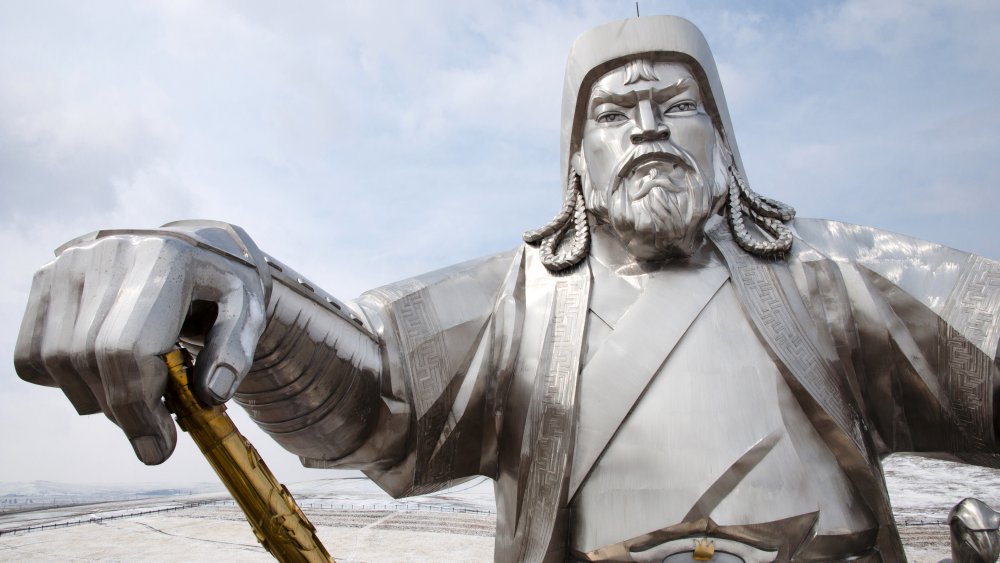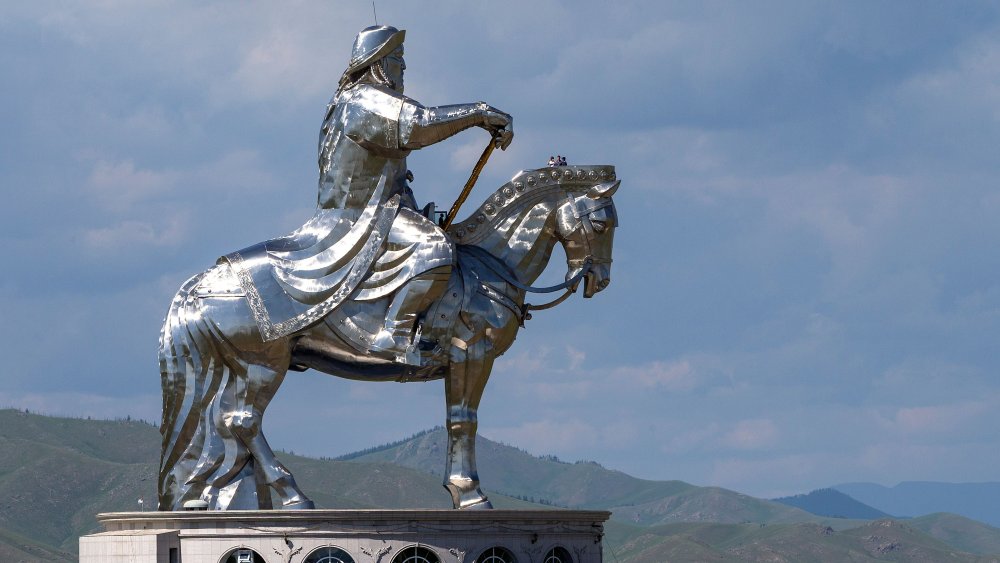The Truth About Genghis Khan's Death
Genghis Khan was the first Khal Drogo and the fifth horseman of the apocalypse. The seemingly indomitable Mongol conqueror cemented both of those legacies while raining searing, equine death on the Khwarazm empire in 1219. That year, the Fifth Crusade was raging in Egypt and scurvy was devouring legions of French Christians. Meanwhile in Central Asia, Genghis Khan and his Mongol riders were eating the city of Otrar for breakfast. As recounted in Genghis Khan & the Mongol Conquests, Khan launched his assault in response to the Shah of Khwarzam persecuting Muslim merchants who were under Mongol protection and executing Mongol envoys.
Otrar bent the knee after a five-month siege. An apocryphal account of Khan's victory claims that he killed the city's governor by having "molten silver poured into his eyes and ears." Fictional or not, that visceral imagery burned a hoofprint into history that became the blueprint for the epic death of Viserys Targaryen on Game of Thrones, per the BBC. But instead of liquid silver, Dothraki ruler Khal Drogo dumps molten gold onto Targaryen's head. And that's not the only instance in which art imitates death. The Dorthraki's horde of horsemen was partly modeled after the Mongols. And in certain key respects, Khal Drogo's (or should we say, "Dro-gold's"?) death hearkens to Genghis Khan's.
The Khan game
Much like Genghis Khan, Khal Drogo's demise came anticlimactically. As recapped by the Game of Thrones Wiki, Drogo's Khaleesi and future mother of dragons, Daenerys, intervenes during a Dothraki raid to prevent the men from assaulting female villagers. One of the the pillagers, Mago, goes to Drogo in protest, but the conqueror honors Daenerys's wishes. Incensed, Mago crudely insults Daenerys and Drogo, setting the stage for an ill-fated battle. Though Drogo emerges victorious and rips out Mago's disrespectful tongue, he suffers a partially self-inflicted wound that becomes infected. Drogo falls ill and then falls off his horse, signaling that the end is near.
If Drogo's death knell rings a bell, it's because it partially echoes accounts of Genghis Khan's death. Though he didn't marry a forward-thinking dragon lady, he improved the condition of Mongol women. According to History, he banned the abduction and selling of women, and author Frank McLynn observes that rape and other violent crimes declined steeply under Khan's rule. In 1227, he perished while attempting to suppress an uprising by the Xi Xia kingdom.
The details of Khan's death remain a mystery, but biographer Brenda Lange writes that there are two competing theories. One alleges that Khan died from an infected arrow wound and the other asserts that he fell off of his horse. On his deathbed, Genghis Khan bade his sons to "[wipe the Xi Xia] off the face of the earth," per History. They honored his wishes by decimating cities and towns.

